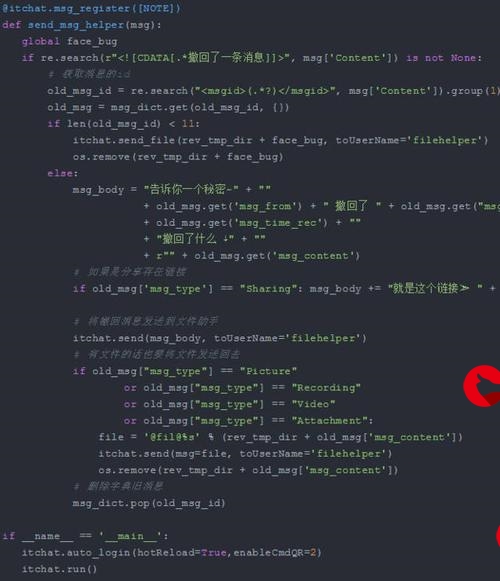 Fashion"/>
Fashion"/>
TensorFlow2 Fashion
1.数据集介绍
FashionMNIST 是一个替代 MNIST 手写数字集的图像数据集。 它是由 Zalando(一家德国的时尚科技公司)旗下的研究部门提供。其涵盖了来自 10 种类别的共 7 万个不同商品的正面图片。
FashionMNIST 的大小、格式和训练集/测试集划分与原始的 MNIST 完全一致。60000/10000 的训练测试数据划分,28x28的灰度图片。你可以直接用它来测试你的机器学习和深度学习算法性能,且不需要改动任何的代码。
官方的关于数据集的介绍可以参考:
| 标注编号 | 类别说明 |
|---|---|
| 0 | T-shirt/top(T恤) |
| 1 | Trouser(裤子) |
| 2 | Pullover(套衫) |
| 3 | Dress(裙子) |
| 4 | Coat(外套) |
| 5 | Sandal(凉鞋) |
| 6 | Shirt(汗衫) |
| 7 | Sneaker(运动鞋) |
| 8 | Bag(包) |
| 9 | Ankle boot(踝靴) |
2.模型训练
Tensorflow版本:2.2.0
2.1 数据加载
数据的加载使用可以直接调用tensorflow包进行联网加载,也可以将数据下载到本地,进行本地数据读取。
代码如下:
#首先导入需要的包,并查看版本信息
import matplotlib as mpl
import matplotlib.pyplot as plt
%matplotlib inline
import numpy as np
import sklearn
import pandas as pd
import os
import sys
import time
import gzip
import tensorflow as tffrom tensorflow import kerasprint(tf.__version__)
print(sys.version_info)
for module in mpl, np, pd, sklearn, tf, keras:print(module.__name__, module.__version__)# 联网数据加载使用
fashion_mnist = keras.datasets.fashion_mnist
(x_train_all, y_train_all), (x_test, y_test) = fashion_mnist.load_data()本地数据下载之后,包含四个文件:
然后,将原来的加载函数load_data稍作修改,即可加载本地文件,只需要将远程下载地址,更改为你的本地文件所在目录即可,此处我的文件目录为data。
def load_data():"""Loads the Fashion-MNIST dataset.This is a dataset of 60,000 28x28 grayscale images of 10 fashion categories,along with a test set of 10,000 images. This dataset can be used asa drop-in replacement for MNIST. The class labels are:| Label | Description ||:-----:|-------------|| 0 | T-shirt/top || 1 | Trouser || 2 | Pullover || 3 | Dress || 4 | Coat || 5 | Sandal || 6 | Shirt || 7 | Sneaker || 8 | Bag || 9 | Ankle boot |Returns:Tuple of Numpy arrays: `(x_train, y_train), (x_test, y_test)`.**x_train, x_test**: uint8 arrays of grayscale image data with shape(num_samples, 28, 28).**y_train, y_test**: uint8 arrays of labels (integers in range 0-9)with shape (num_samples,).License:The copyright for Fashion-MNIST is held by Zalando SE.Fashion-MNIST is licensed under the [MIT license]()."""dirname = os.path.join('datasets', 'fashion-mnist')# 数据下载到本地,提供一个本地的文件夹地址base = 'data/'# base = '/'files = ['train-labels-idx1-ubyte.gz', 'train-images-idx3-ubyte.gz','t10k-labels-idx1-ubyte.gz', 't10k-images-idx3-ubyte.gz']paths = [base + f_name for f_name in files]# for fname in files:# paths.append(get_file(fname, origin=base + fname, cache_subdir=dirname))with gzip.open(paths[0], 'rb') as lbpath:y_train = np.frombuffer(lbpath.read(), np.uint8, offset=8)with gzip.open(paths[1], 'rb') as imgpath:x_train = np.frombuffer(imgpath.read(), np.uint8, offset=16).reshape(len(y_train), 28, 28)with gzip.open(paths[2], 'rb') as lbpath:y_test = np.frombuffer(lbpath.read(), np.uint8, offset=8)with gzip.open(paths[3], 'rb') as imgpath:x_test = np.frombuffer(imgpath.read(), np.uint8, offset=16).reshape(len(y_test), 28, 28)return (x_train, y_train), (x_test, y_test)# 本地数据读取
(x_train_all, y_train_all), (x_test, y_test) = load_data()
2.2 数据划分
提供的数据包含60000/10000 的训练/测试数据。我们再将训练集进行划分,train和valid,原有的测试数据用于模型最终的测试,训练集前5000数据作为valid,剩余的数据作为train集合。
# 原有训练数据划分为train和valid
x_valid, x_train = x_train_all[:5000], x_train_all[5000:]
y_valid, y_train = y_train_all[:5000], y_train_all[5000:]print(x_valid.shape, y_valid.shape)
print(x_train.shape, y_train.shape)
print(x_test.shape, y_test.shape)
数据集合划分情况如下:
(5000, 28, 28) (5000,)
(55000, 28, 28) (55000,)
(10000, 28, 28) (10000,)
对其中的一个样本进行可视化查看
def show_single_image(img_dir):plt.imshow(img_dir, cmap="binary")plt.show()show_single_image(x_train[0])
绘图结果如下:
我们可以多查看一些数据样本,编写函数进行自定义查看。
def show_imgs(n_rows, n_cols, x_data, y_data, class_names):"""指定行列个数,显示数据集中的n_rows*n_cols个样本图像"""assert len(x_data) == len(y_data)assert n_rows * n_cols < len(x_data)plt.figure(figsize = (n_cols * 1.4, n_rows * 1.6))for row in range(n_rows):for col in range(n_cols):index = n_cols * row + colplt.subplot(n_rows, n_cols, index + 1)plt.imshow(x_data[index], cmap="binary", interpolation = "nearest")plt.axis('off')plt.title(class_names[y_data[index]])plt.show()# 指定类别
class_names = ['T-shirt', 'Trouser', 'Pullover', 'Dress', 'Coat', 'Sandal', 'Shirt', 'Sneaker', 'Bag', 'Ankle boot']
# 查看15个样本图片
show_imgs(3, 5, x_train, y_train, class_names)
次数我们查看15个样本图片,结果如下:
2.3 模型构建
我们使用tensorflow2中集成的kera包进行Sequential模型构建:keras.models.Sequential()
Sequential提供了非常简便的方式进行神经网络模型的构建,就是将要添加的模型一层一层的逐层进行add即可,也可以通过列表的方式,一起进行添加。
model = keras.models.Sequential()
model.add(keras.layers.Flatten(input_shape=[28, 28]))
model.add(keras.layers.Dense(300, activation="relu"))
model.add(keras.layers.Dense(100, activation="relu"))
model.add(keras.layers.Dense(10, activation="softmax"))# 模型组合成列表进行统一添加
"""
model = keras.models.Sequential([keras.layers.Flatten(input_shape=[28, 28]),keras.layers.Dense(300, activation='relu'),keras.layers.Dense(100, activation='relu'),keras.layers.Dense(10, activation='softmax')
])
"""# 关于激活函数的解释
# relu: y = max(0, x)
# softmax: 将向量变成概率分布. x = [x1, x2, x3],
# y = [e^x1/sum, e^x2/sum, e^x3/sum], sum = e^x1 + e^x2 + e^x3# reason for sparse: y->index. y->one_hot->[]
# 由于此处的数据类型y是一个数,所以此处使用sparse_categorical_crossentropy,如果y是one_hot向量,那么此处使用categorical_crossentropy
#模型编译
modelpile(loss="sparse_categorical_crossentropy",optimizer = "sgd",metrics = ["accuracy"])
经过上面的步骤,模型已经构建完成,编译生成模型结构,接下来可以查看模型的相关信息。
# 查看模型的各层
model.layers
#输出结果
[<tensorflow.python.keras.layers.core.Flatten at 0x7f4e6d11b438>,<tensorflow.python.keras.layers.core.Dense at 0x7f4e6d11beb8>,<tensorflow.python.keras.layers.core.Dense at 0x7f4e6d11b588>,<tensorflow.python.keras.layers.core.Dense at 0x7f4e6d90bfd0>]
# 模型的结构信息,包括参数情况
model.summary()# 输出结果
Model: "sequential_2"
_________________________________________________________________
Layer (type) Output Shape Param #
=================================================================
flatten_2 (Flatten) (None, 784) 0
_________________________________________________________________
dense_6 (Dense) (None, 300) 235500
_________________________________________________________________
dense_7 (Dense) (None, 100) 30100
_________________________________________________________________
dense_8 (Dense) (None, 10) 1010
=================================================================
Total params: 266,610
Trainable params: 266,610
Non-trainable params: 0
_________________________________________________________________
关于各层模型的向量的维度计算,解释如下:
[None, 784] * W + b -> [None, 300] W.shape [784, 300], b = [300]
输入的数据就是[None,2828],然后经过Flatten之后,就是[None, 784],接着就是添加全连接层,维度是300,那么这个时候XW + b = y,可以算出W的维度,也就是权重的维度应该是[784, 300],偏置的维度也就是[300]。对于后边全连接层的各参数的维度计算同样的道理可以得出。
接下来就是模型训练,使用的是fit函数。
这里指定了epochs的个数,就是一共要训练多少次,训练一次就是将x_train数据跑一遍模型。而每一次往模型中输入多少个样本,就是batch_size,此处指定了64,batch_size越大,占用的内存越大,所以要参照自己的机器配置适当设置。
history = model.fit(x_train, y_train, epochs=10,validation_split=False,batch_size=64,validation_data=(x_valid, y_valid))
模型训练过程如下:
Epoch 1/10
860/860 [==============================] - 3s 3ms/step - loss: 2.3026 - accuracy: 0.0986 - val_loss: 2.3028 - val_accuracy: 0.0914
Epoch 2/10
860/860 [==============================] - 3s 3ms/step - loss: 2.3026 - accuracy: 0.0991 - val_loss: 2.3029 - val_accuracy: 0.0914
Epoch 3/10
860/860 [==============================] - 3s 3ms/step - loss: 2.3026 - accuracy: 0.0985 - val_loss: 2.3028 - val_accuracy: 0.0914
Epoch 4/10
860/860 [==============================] - 3s 3ms/step - loss: 2.3026 - accuracy: 0.0988 - val_loss: 2.3029 - val_accuracy: 0.0914
Epoch 5/10
860/860 [==============================] - 3s 3ms/step - loss: 2.3026 - accuracy: 0.1001 - val_loss: 2.3028 - val_accuracy: 0.0914
Epoch 6/10
860/860 [==============================] - 3s 3ms/step - loss: 2.3026 - accuracy: 0.0986 - val_loss: 2.3028 - val_accuracy: 0.0914
Epoch 7/10
860/860 [==============================] - 3s 3ms/step - loss: 2.3026 - accuracy: 0.1008 - val_loss: 2.3028 - val_accuracy: 0.0914
Epoch 8/10
860/860 [==============================] - 3s 3ms/step - loss: 2.3026 - accuracy: 0.0984 - val_loss: 2.3028 - val_accuracy: 0.0914
Epoch 9/10
860/860 [==============================] - 3s 3ms/step - loss: 2.3026 - accuracy: 0.0973 - val_loss: 2.3028 - val_accuracy: 0.0914
Epoch 10/10
860/860 [==============================] - 3s 3ms/step - loss: 2.3026 - accuracy: 0.1003 - val_loss: 2.3028 - val_accuracy: 0.0914
可以看出由于设置的batch_size为64,所以训练一次要进行860个批次的样本输入。
针对history,可以查看他的相关类型和相关信息:
# 查看类型
type(history)
# 模型结果相关信息
history.history
# 输出结果如下:
{'accuracy': [0.09905454516410828,0.10116363316774368,0.09749090671539307,0.09958181530237198,0.09843636304140091,0.09821818023920059,0.09734545648097992,0.1000545471906662,0.09998181462287903,0.0989818200469017],'loss': [2.302921772003174,2.302874803543091,2.302971839904785,2.3028604984283447,2.3029799461364746,2.3029377460479736,2.3030099868774414,2.302891731262207,2.3029096126556396,2.3028926849365234],'val_accuracy': [0.09860000014305115,0.09759999811649323,0.10019999742507935,0.09139999747276306,0.09799999743700027,0.1111999973654747,0.09799999743700027,0.10019999742507935,0.10019999742507935,0.10080000013113022],'val_loss': [2.302537679672241,2.3035120964050293,2.303284168243408,2.303611993789673,2.3037195205688477,2.30253267288208,2.3035061359405518,2.30228328704834,2.302734851837158,2.3030896186828613]}
最后对模型返回结果中的相关参数画图显示变化情况。
def plot_learning_curves(history):pd.DataFrame(history.history).plot(figsize=(8, 5))plt.grid(True)plt.gca().set_ylim(0, 1)plt.show()plot_learning_curves(history)
结果如下图:
从最终的结果可以看出,准确率很低,而且从整个训练过程也可以看出,每次训练完之后,基本上没有太大的变化。
我们对数据集中的数据的大小进行统计查看:
print(np.max(x_train), np.min(x_train))
# 输出结果:
255 0
图像灰度值从0到255,数据存在较大的分布跨度。输入数据的维度是28*28,其展开之后就是784。在机器学习领域中,不同评价指标(即特征向量中的不同特征就是所述的不同评价指标)往往具有不同的量纲和量纲单位,这样的情况会影响到数据分析的结果,为了消除指标之间的量纲影响,需要进行数据标准化处理,以解决数据指标之间的可比性。原始数据经过数据标准化处理后,各指标处于同一数量级,适合进行综合对比评价。其中,最典型的就是数据的归一化处理。简而言之,归一化的目的就是使得预处理的数据被限定在一定的范围内(比如[0,1]或者[-1,1]),从而消除奇异样本数据导致的不良影响。
归一化的目的,有三个方面可以参考:
- 避免具有不同物理意义和量纲的输入变量不能平等使用;
- bp中常采用sigmoid函数作为转移函数,归一化能够防止净输入绝对值过大引起的神经元输出饱和现象;
- 保证输出数据中数值小的不被吞食.
所以,从上面的训练过程和结果可以看出,我们的模型并没有很好地拟合,所以,需要解决输入数据的归一化问题,下个部分进行归一化的模型构建。
更多推荐
TensorFlow2 Fashion












发布评论